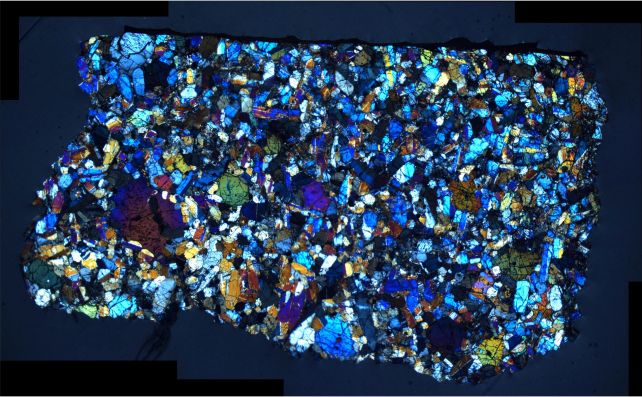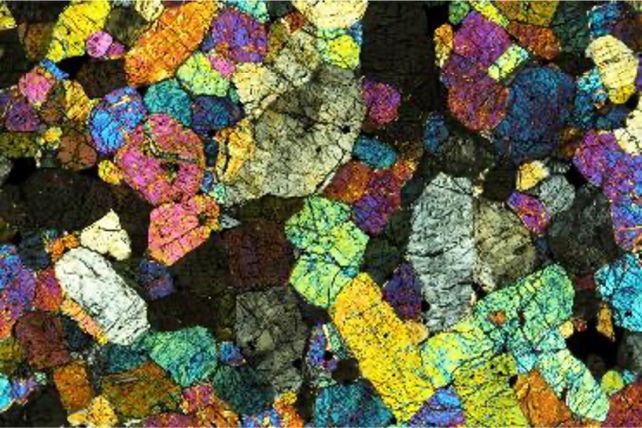(NLDO) - The inner secrets of a planet believed to have once been habitable like Earth have just been revealed by two treasures from space.
A research team led by geologist James Day of the Scripps Institution of Oceanography (University of California at San Diego - USA) analyzed "treasures from other planets" excavated in France in 1815 and in Egypt in 1905.
These are the strange meteorites Chsignite (from Chtasky - France) and Nakhlite (from Nakhla - Egypt), which attracted the attention of the scientific community more than 100-200 years ago, at the time they were found.
But it's only now that the secrets they hide have truly been revealed by modern techniques: the structure of Mars' crust and mantle.

Space treasure from Egypt - Nakhlite meteorite - Photo: UC SAN DIEGO
These two space rocks have different compositions. Nakhlite is a basalt, containing the minerals augite and olivine. Chsignite is almost entirely olivine.
On Earth, basalt is abundant in the crust and olivine is abundant in the mantle.
According to Science Alert, the painstaking process of testing and comparison helped researchers determine that they were formed in the same volcano about 1.3 billion years ago.
The differences in these meteorites are due to a process called fractional crystallization, where different conditions cause liquid magma to solidify into different configurations.
Nakhlites are part of the Martian crust, which has been slightly altered by interaction with the planet's atmosphere, while Chsignites are buried in the mantle.

The unique texture of the Chsignite meteorite - Photo: UC SAN DIEGO
Interestingly, these two space treasures show that volcanic activity on Mars is both similar and different from volcanic activity on Earth.
Fractional crystallization appears to proceed in a similar manner, forming basalt-dominated rocks in the crust and olivine-dominated rocks in the mantle, much like volcanic activity on Earth.
However, the magma reservoirs and associated materials on Mars are extremely ancient, separated from each other soon after the red planet formed, rather than being connected as on Earth.
This may be because Mars lacks plate tectonics - a cycle that causes Earth's landmasses to flip, with continents repeatedly coming together to form supercontinents and then breaking apart again.
Thus, the present-day structure of Mars may also provide a glimpse of the early Earth before it was turned upside down.
The study was recently published in the journal Science Advances.
Source: https://nld.com.vn/bau-vat-ai-cap-phap-manh-hanh-tinh-khac-roi-xuong-dia-cau-196240602111013078.htm









































































































Comment (0)